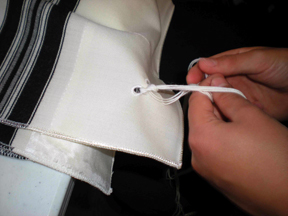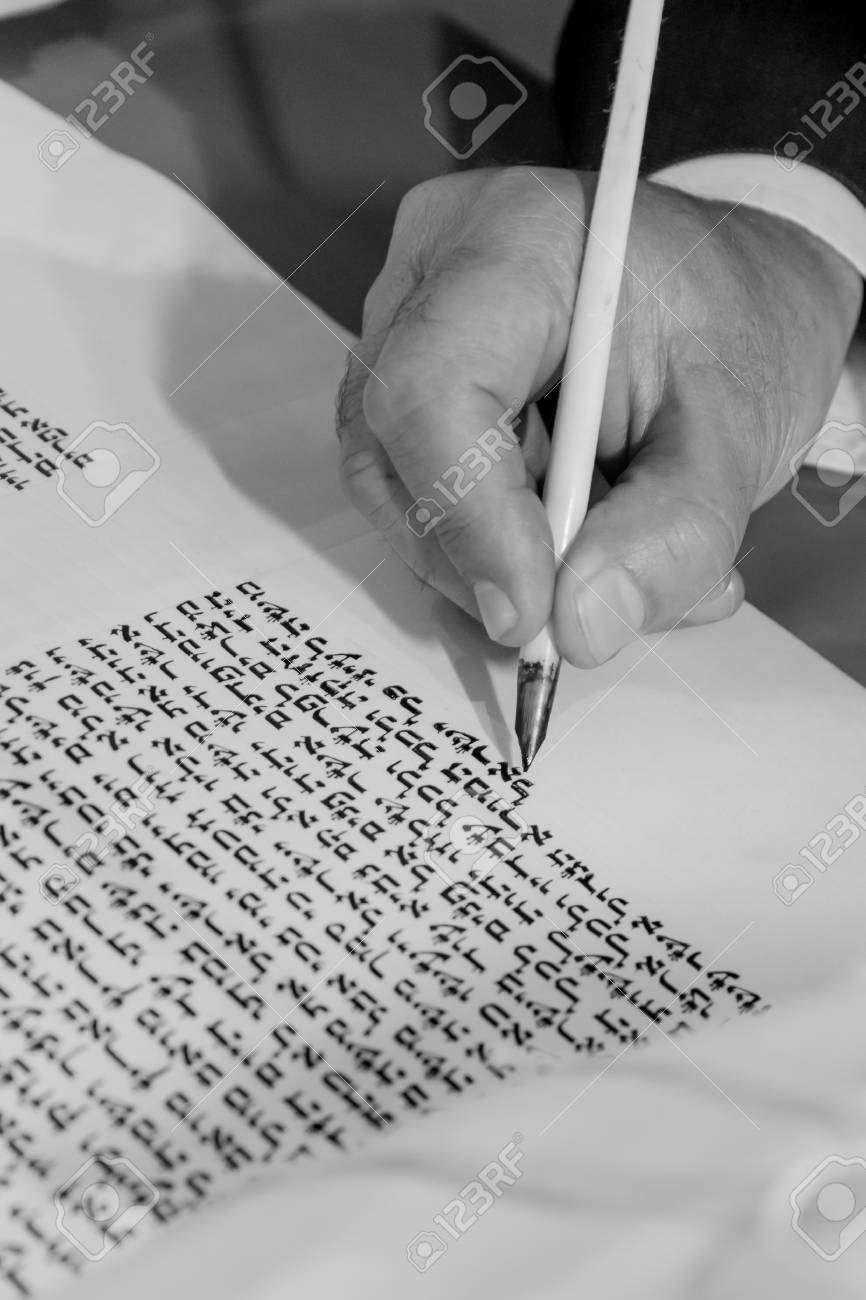BS”D
Sukkah 11a (2)
Tishrei 11, 5781. September 29, 2020
A few brief notes.
1-
This is a general principle that when performing a Mitzvah (or the preparation to a Mitzvah) the Mitzvah must be performed at that time. One cannot perform a Mitzvah in an improper way, correct it and it becomes valid indirectly.
The classic example is our Mishna where one covers the Sukkah with branches still attached to the tree or with ivy attached to the ground. This is invalid because it is מחובר.
Now, if one cuts the branches after they are on the Sukkah, that would not be Kosher due to תעשה ולא מן העשוי. His last action, cutting the branches, is not considered ‘placing the סכך on the Sukkah’. The סכך has already been placed. The cutting, ‘Kosherizes’ the,סכך. Not ‘applying the סכך’.
2- The Gemara discusses this topic in relation to ציצית as well. If one were to insert one long string into the בגד and tie the knots it would be invalid since there are no four individual strings. However if he snips the ends, thus creating four individual strings, it would seem to be Kosher.
However, due to the concept of תעשה ולא מן העשוי it would be פסול. Why? As explained above, when he cuts them he is not performing the ועשו להם ציצית as that was done when he strung the long string. True, the cutting creates 4 individual strings, but that is not the ‘application’ ועשו that the Torah requires.

3- We mentioned other examples of the concept of תעשה ולא מן העשוי.
Here is one. רע”א OC 280, 1.
He quotes, the ספר גן המלך that writes an interesting Halacha.
If there is a hole R”L in a Sefer Torah, making the ס”ת pasul, the proper way to repair it is by attaching a patch of parchment to cover the hole. Once attached, the missing letters are then written on the parchment patch.

However, writes the גן המלך, if one were to first write the letters on the patch and only then glue or sew the patch to the ספר תורה, that would be considered תעשה ולא מן העשוי !!!.
We discussed this at length.
4- We mentioned the famous אבני נזר. He writes that תעשה ולא מן העשוי is only when the improper performance was done 100%, and then corrected.
For example, one covered the entire Sukkah with connected branches. Cutting them would be תעשה ולא מן העשוי.
However, if one only covered 49% of the Sukkah with connected branches and then added 2% of Kosher and then cut the 49% it would not be considered תעשה ולא מן העשוי.
Or simpler yet: If one covered a Sukka with vines up to 50% and then cut them it would not be considered תעשה ולא מן העשוי !!!

His reasoning is that the 49% is not considered סכך פסול since it would theoretically never create a proper Sukkah.
If however the attached סכך פסול would cover 51% of the Sukkah, meaning that there is sufficient (Pasul) סכך, then the cutting them is considered תעשה ולא מן העשוי.
His proof was discussed as well. More after Yom Tov.
5- There is a story told of Reb Akiva Eiger. A Sefer Torah was found an its origins were unknown. The question was whether this scroll was written as a legitimate Sefer Torah by a pious סופר. Or perhaps it came from a dubious source.
Rumor had it that perhaps it was written by a scribe who was not a ירא שמים at the very best or perhaps by a non-Jew. Some claimed that it was a Torah used in the past in various Shuls. The doubters claimed that this unknown ‘scribe’ was proficient and would write many Torah’s quickly but with no קדושה etc. and offer them for sale .
In short, Reb Akiva Eiger was asked to rule on its Kashrus.
He opened the Sefer Torah, rolled it to the very end and declared it as Kosher.
If you look at the last few words, he said, you will see that they are written unlike much like the rest of the Sefer.

All Kosher Sefer Torahs are finished with great fanfare. Members of the community are invited to fill in the last few words. Inevitably, some letters while Kosher, are a bit smudged or out of proportion. This is a sign of Kashrus.
This Sefer Torah, he concluded, indeed had a Siyum. It was written for non commercial purposes by an proper scribe!

After a bit of investigation it was indeed verified to be so.
When asked how he came up with this idea, Reb Akiva Eiger responded that we know the saying מנהג ישראל תורה היא. The custom followed by Yiden is part and parcel of the Torah itself.
So the Minhog to complete a Sefer Torah with pomp and letter writing is the proof that it is indeed a properly written Torah.
So מנהג ישראל is the proof that תורה היא – a proper Torah.
.והנה לפי הדברים המתבארים לעיל דחזינן דבל אחד מישראל יש לו אחיזה באות אחת בתורה הקדושה יש לבאר בס”ד את ענין המנהג שנוהגים לתת לציבור הנאספים לכבודה של תורה בהכנסת הספר תורה בעת כתיבת סיום האותיות לתת לכל אהד מהם לכתוב אות בספר תורה ואכן ענין מנהג זה יסודתו בהררי קודש וכמבואר נמי בס’ שירה חדשה ריש פרק ח עמוד סח שהביא שם מהרב אבני בית היוצר מעשה פלא דהוה בזמנו של הגאון רבי עקיבא איגר ומזה יש ללמוד שענין כתיבת האותיות על ידי הציבור בסיום כתיבת הספר תורה מנהג ישראל קדוש הוא דההוה עובדא בזמן הגאון רבי עקיבא איגר שמצאו ספר תורה בשדה ונספקו בו אם כתבו גוי או מין שדינו מבואר בשו”ע יו”ד סי’ רפא דיגנז או ישרף והציעו את השאלה הזאת לפני הגאון רבי עקיבא איגר זצ”ל והשיב להם הגאון דבאשר מנהגן של ישראל תורה וכשבאים לכתוב את השורות האחרונות של פרשת וזאת הברכה נהגו שכל אחד כותב אות לפי שמו בספר תורה כגון אם שמו משה כתוב מ’ ומכיון שאותיות שנכתבו על ידי הרבה בעלי בתים אינן דומים זה לזה והנה אם היה הכותב ישראל בלי ספק היה עושה כמנהגן של ישראל הזה ולכן אם יש בהם שינוי סימן שישראל כתבו אבל אם לא ימצאו כן אלא גם סופי השורות של פר’ וזאת הברכה הם דומים ואין בהם שום שינוי מזה הוכחה שגוי כתבו ועל כן יגנז וכמבואר בשו”ע יו”ד הנ”ל ע”כ עובדא דהוה